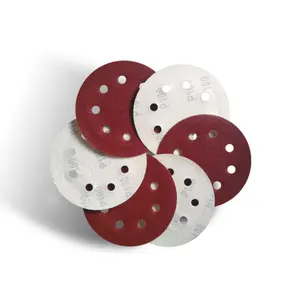A wall sander, also known as an electric drywall sander or drywall power sander is a convenient tool powered by electricity, which can efficiently polish uneven, rough wall surfaces.
The structure of the wall sander
The drywall sander usually consists of 5 main parts: an electric motor, sanding disc, spindle, handle, and dustproof device. When the wall sander is plugged in, the electric motor begins to swirl, and it provides motivation for sanding the disc to sand. Usually, an AC motor or DC motor is widely used as a motor for the drywall sander. A sanding disc is usually round or square and it is alternative according to the degree of wear. Specifically, the spindle connects the motor and the sanding disc. When the motor swirls, the sanding disc will swirl as well due to the rotation of the spindle. The handle is designed for the user to hold and control it. The dustproof device, also called a protective cover is not only used to collect dust and waste materials generated during the sanding process to keep the working environment clean but also used to avoid splashing materials from injuring the human body or other items. It is generally located around the sanding disc.
The function of the wall sander
Electric wall sanders can polish the surfaces of various objects, including metal, wood, glass, ceramics, and other materials. Drywall sanders can help remove burrs, making the surface shiny and smooth. Apart from this, the drywall sander can remove things like paint, rust, stain, and cement from the surface quickly, and it can also change the shape and size of an object. For example, in metalworking, a wall sander can be used to curve a flat plate or reduce the size of an object.
The categories of the wall sander
Basically, wall sanders can be divided into 3 types according to different applicable occasions. The first one is the drywall sander with vacuum. This type has a vacuum bag and sucker that can take in dust or flakes dropping from the surface, preventing these tiny particles from being breathed into the human body and causing pollution. In addition, a drywall sander with a vacuum usually has an extension rod that can sand surfaces that are out of hands’ reach like the ceiling, which is often used in domestic situations. The second one is the orbital drywall sander. Such wall sander is often used in tile and stone processing, glass processing, and woodworking. The third one is the wall sander with movable wheels, so it can move with the user. This type is often applied in metal processing and car maintenance, for instance, de-defect treatment of metal surfaces, removal of the oxide layer, removal of rust, and repair of scratches.










































 浙公网安备 33010002000092号
浙公网安备 33010002000092号 浙B2-20120091-4
浙B2-20120091-4